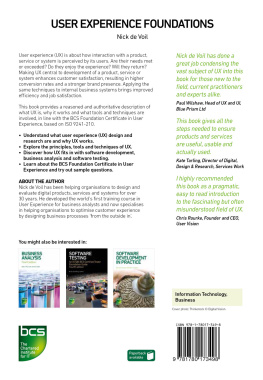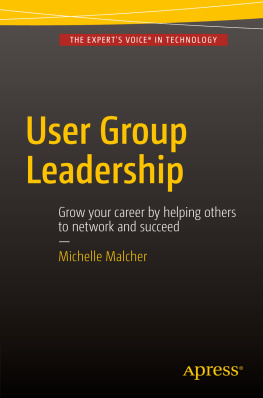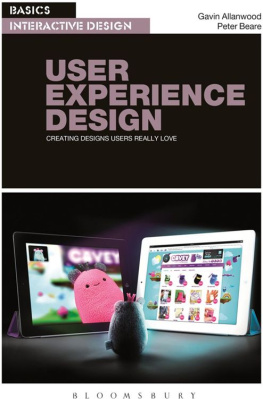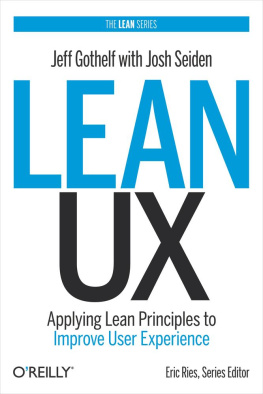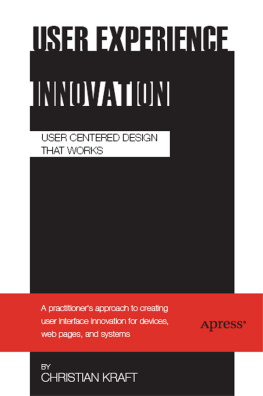APPENDIX
Guide to the Methods in Part II
. They are sequenced to suggest a logical order for a UX project from start to finish, although by no means do you have to do them all or follow them in order. Refer to the Method Focus column to determine when and why to use a particular method.
# | Method Name | Method Focus | Average Time |
Planning and Discovery Methods |
| UX Questionnaire | What do you know about your product and the user experience that its intended to provide? What do you need to know? | 12 hours |
| UX Project Plan | What UX practices will you employ to design a great user experience? | 23 hours |
| Listening Tour | What are the teams priorities? How much awareness and support for UX currently exists? | 58 hours |
| Opportunity Workshop | What areas of the product are most in need of improvement from a UX perspective? | 34 hours |
| Project Brief | What are the expected outcomes for this user-centered design project? | 23 hours |
| Strategy Workshop | What is your teams vision for the ideal user experience? What do you need to focus on to bring that unique experience to life? | 48 hours |
# | Method Name | Method Focus | Average Time |
Research Methods |
| Learning Plan | What do you know? What dont you know? How are you going to learn it? | 12 hours |
| Guerilla User Research | What concerns are top of mind for users? How do they really behave? How are people using your product today? | About 2 days |
| Proto-Personas | How can you think empathetically about your customers needs, goals, and challenges when using your product? | 36 hours |
| Heuristic Markup | How does a user experience the product from beginning to end? | 46 hours |
| Comparative Assessment | What are the standards and best practices that customers are likely to expect in a product like yours? | 48 hours |
| Content Patterns | What content and capabilities do users have access to in your product? How is it structured? What is the overall quality? | 48 hours |
# | Method Name | Method Focus | Average Time |
Design Methods |
| Design Brief | At a high level, how would you describe your target design solution? What are the features and personality of the product? Who is it designed for? What activities is it intended to encourage or enable? | 23 hours |
| Design Principles | What should the experience of using the product feel like to a user? | 24 hours |
| Sketching | What are some different forms the product design could take? | As much or as little time as you need (as little as 30 minutes helps) |
| Sketchboards | What might the overall system or product look like? What range of ideas is possible at each point in the process? | 34 hours |
| Task Flows | How will the experience unfold over time? | 12 hours |
| Wireframes | How will the product look and function in detail? | Hours, days, or weeks, depending on the scope of the system |
# | Method Name | Method Focus | Average Time |
Testing and Validation Methods |
| Paper and Interactive Prototypes | Does it work and feel as intended? | Varies based on format of prototype |
| Black Hat Session | What areas of the design could be improved? | 3060 minutes |
| Quick-and-Dirty Usability Test | Can people use this product as intended? | As little as 10 or 15 minutes per person |
| Five-Second Test | What impression is created by a specific screen, step, or moment within the product? | 510 minutes per screen |
| UX Health Check | Can you measure the baseline quality of a user experience and assess changes in quality over time? | 1 hour on a recurring basis |
# | Method Name | Method Focus | Average Time |
Evangelism Methods |
| Bathroom UX | Builds awareness of user-centered design and keeps people interested in your work. | 12 hours |
| Mini Case Studies | Summarizes your work and turns it into compelling, bitesized stories that you can share with others. | About 2 hours per case study |
| Peer-to-Peer Learning Community | Mobilizes support and knowledge within a community of interested colleagues. | Varies depending on format and role |
| Pyramid Evangelism | Builds relationships and potential opportunities for UX in an organization. | Ongoing |
ACKNOWLEDGMENTS
First, thank you to Lou Rosenfeld for seeing a book in this topic, and for his guidance and support on the long road to its completion. Further kudos to Lou for having the good sense to pair me with the wonderful editor Marta Justak. Without Martas patience, expertise, and tough love, this book simply would not exist. Thank you, Marta, for helping me to accomplish what I never thought possible. Thanks also to Stephen P. Anderson for writing a lovely foreword that perfectly captures the spirit of the book.
The smart people at Adaptive Path taught me everything I know about user experience. Several people from Adaptive Path deserve my special thanks. Brandon Schauer was a role model and mentor for me, probably without even realizing it. Dan Harrelson said the magic words that made me decide I could actually write this book. Peter Merholz challenged me to find my topic and my voice. Brian Cronin, Joanie McCollom, and Pam Daghlian provided the most critical component of all, friendship. Thanks to you all. Before Adaptive Path, there was Jeffrey Coleman, the perfect manager for a team of one. He provided the support and the freedom to help me find my way.
They say it takes a village to raise a child, and a book is like a child. Lucky for me, a sizable village of smart UX practitioners stepped forward to help raise this book. Thanks to Andrew Maier for being the first person to offer to share his story and give me hope that others would do the same. Thanks also to Jim Ungar, Jeff White, Joe Sokohl, Jon Strande, Michael Carvin, and Louise Gruenberg who generously shared their stories and insights with me. Thank you to the 300 plus people who completed my survey and helped me learn more about common challenges for UX teams of one. Lelia Ferro, Graham Odds, Jack Holmes, James Goldsworthy, Jay Spanton, Jenny Grinblo, Mary Lojkine, Natalie Moser, Roger Attrill, Silvia Di Gianfrancesco, and Tom Randle all reviewed early drafts of the book and provided invaluable feedback that made it clearer, more informative, and just plain better. Extra special thanks to Mary Lojkine, whose thorough and thoughtful recommendations on structure rooted out unnecessary complexity and simplified the book for the better.


